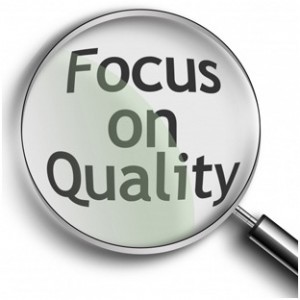 PRINCE2 Project Quality Review
PRINCE2 Project Quality Review
Ensuring the desired level of quality is achieved for a project deliverable or product is a must-do for all Project Managers. The benefits of delivering products which meet the documented quality criteria are numerous and include:
- Controls costs and keeps the project on schedule by preventing or minimising re-work.
- Improved customer satisfaction, morale and confidence levels.
- Increases stakeholder buy-in.
- Decreases project risk.
- Lower ongoing operational costs for a product which is not fit for purpose.
There are many ways to undertake quality reviews including independent gateway reviews, control charts and statistical tools. The most appropriate quality review to use will be influenced by factors such as industry standards, complexity and type of product being reviewed and project constraints such as budget, time and available resources.
To help ensure the conformity of a product against its quality criteria, PRINCE2 provides the ‘Quality Review Technique’. This is a structured, team based and easy to use technique and is especially useful to review products such as documentation and testing results. It is essentially an organised meeting between the requester and the producer of the product being reviewed.
There are four roles associated with the Quality Review Technique.
Chair: Responsible for the overall coordination of the review. This role is often performed by the Project Manager.
Presenter: Introduces the product for review and represents the producer of the product. Presenter also coordinates and tracks the work after the review and implements the agreed changes.
Reviewer: Reviews the product against the documented quality criteria. The reviewer also confirms corrections and/or improvements resulting from the review. There will often be more than one reviewer.
Administrator: Provides administrative support for the Chair and records the results and actions.
The Quality Review Technique is performed in three distinct phases: Plan and organise the review, perform the review and perform post-review actions.
Prior to the Review Meeting:
- Chair and/or Administrator make the administrative arrangements.
- Chair ensures the product is ready for review.
- Presenter distributes copies of the product to the review team.
- Reviewers review the product in line with the quality criteria documented in the associated product description.
- Reviewers submit a question and/or feedback list to the Chair prior to the review.
- Chair provides a consolidated question and/or feedback list to the Presenter prior to the review.
- Chair develops agenda for the review meeting and distributes to attendees.
During the Review Meeting:
- Chair performs any necessary introductions.
- Presenter provides a summary of the product being reviewed and then performs a detailed product ‘walk-through’, addressing any previously provided questions and feedback from the Reviewers.
- Reviewers discuss necessary actions for each identified problem.
- Administrator records and confirms any actions and responsibilities during the meeting.
- Chair determines the review result. The product can be:
- Complete (Product is fit for purpose and has met its quality criteria.)
- Conditionally complete (Product is fit for purpose after the actions are successfully completed.)
- Incomplete (Product requires another quality review cycle.)
- Chair closes the meeting and informs interested parties of the outcome.
After the Meeting:
- Presenter coordinates and tracks any required actions and provides updated version of product to the Reviewers.
- Once the Reviewers have approved the remedial work, the Chair signs-off on the product.
- Chair and/or Administrator communicate the quality review outcome to any interested parties as required and stores the results.
- Presenter requests formal approval for the product.
A Few Hints & Tips:
- The product being reviewed does not have to be the final version. In fact, reviewing a product whilst still in its development stage should be encouraged.
- At the meeting, agree on what the product defect or opportunities are. Do not waste time discussing potential solutions.
- Maintain a positive team-based approach. Review the product, not each other.
- Participants should be suitably prepared for the review so as to not waste time of the other participants.
- The Chair and Administrator roles are independent and should not take sides at any stage throughout the process.
